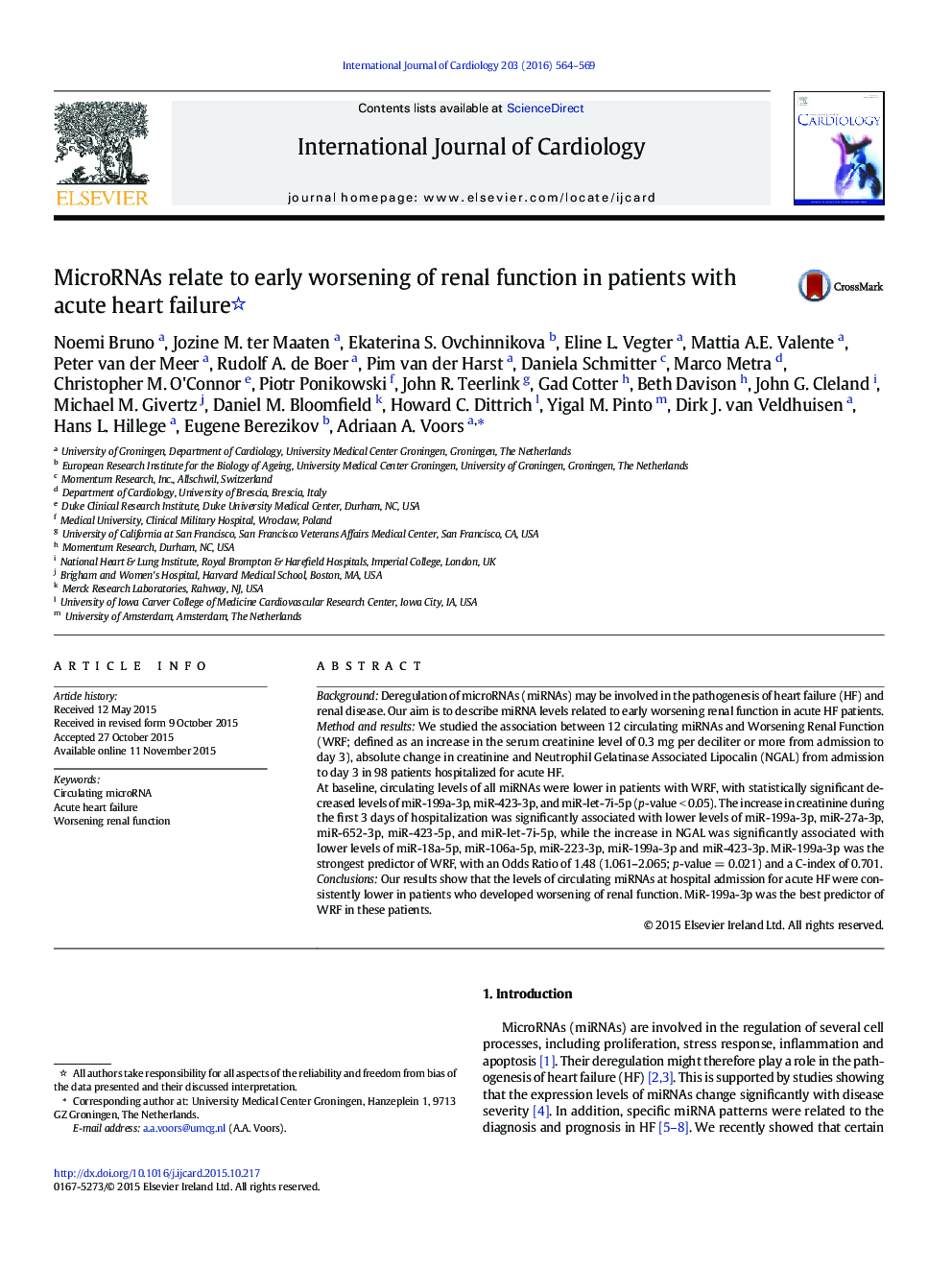| Article ID | Journal | Published Year | Pages | File Type |
|---|---|---|---|---|
| 5965660 | International Journal of Cardiology | 2016 | 6 Pages |
ABSTRACTBackgroundDeregulation of microRNAs (miRNAs) may be involved in the pathogenesis of heart failure (HF) and renal disease. Our aim is to describe miRNA levels related to early worsening renal function in acute HF patients.Method and resultsWe studied the association between 12 circulating miRNAs and Worsening Renal Function (WRF; defined as an increase in the serum creatinine level of 0.3 mg per deciliter or more from admission to day 3), absolute change in creatinine and Neutrophil Gelatinase Associated Lipocalin (NGAL) from admission to day 3 in 98 patients hospitalized for acute HF.At baseline, circulating levels of all miRNAs were lower in patients with WRF, with statistically significant decreased levels of miR-199a-3p, miR-423-3p, and miR-let-7i-5p (p-value < 0.05). The increase in creatinine during the first 3 days of hospitalization was significantly associated with lower levels of miR-199a-3p, miR-27a-3p, miR-652-3p, miR-423-5p, and miR-let-7i-5p, while the increase in NGAL was significantly associated with lower levels of miR-18a-5p, miR-106a-5p, miR-223-3p, miR-199a-3p and miR-423-3p. MiR-199a-3p was the strongest predictor of WRF, with an Odds Ratio of 1.48 (1.061-2.065; p-value = 0.021) and a C-index of 0.701.ConclusionsOur results show that the levels of circulating miRNAs at hospital admission for acute HF were consistently lower in patients who developed worsening of renal function. MiR-199a-3p was the best predictor of WRF in these patients.
